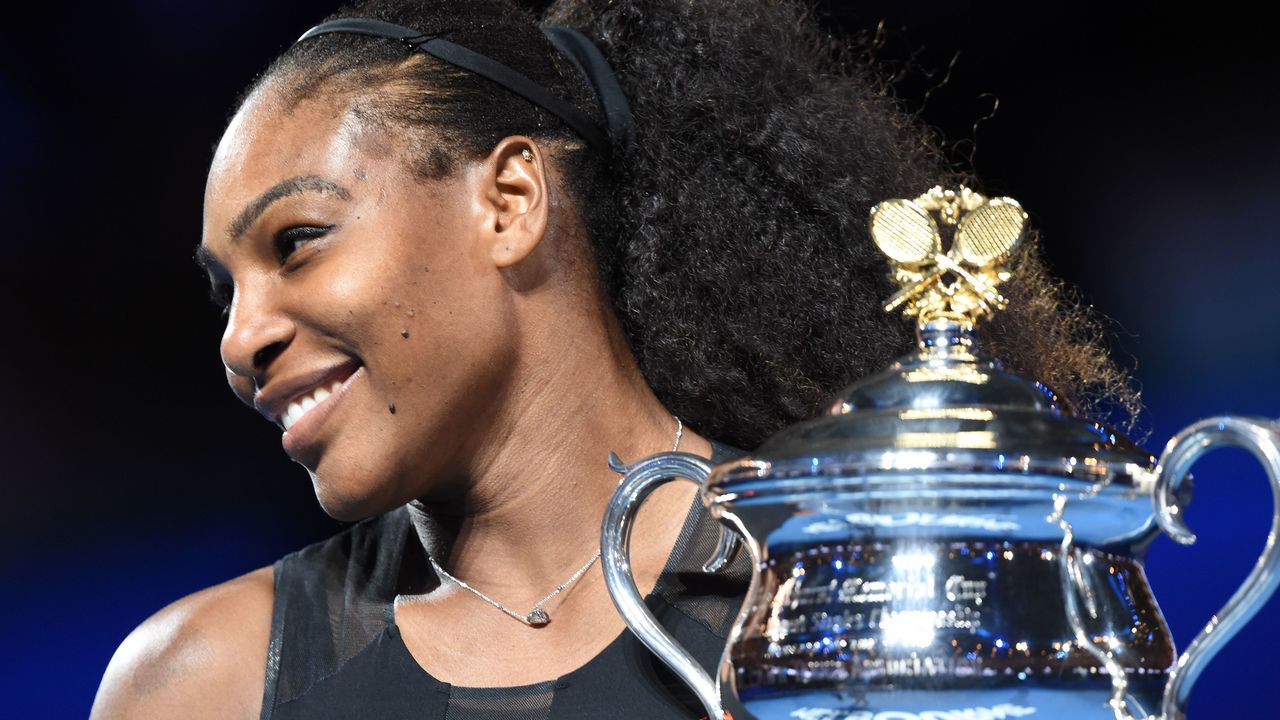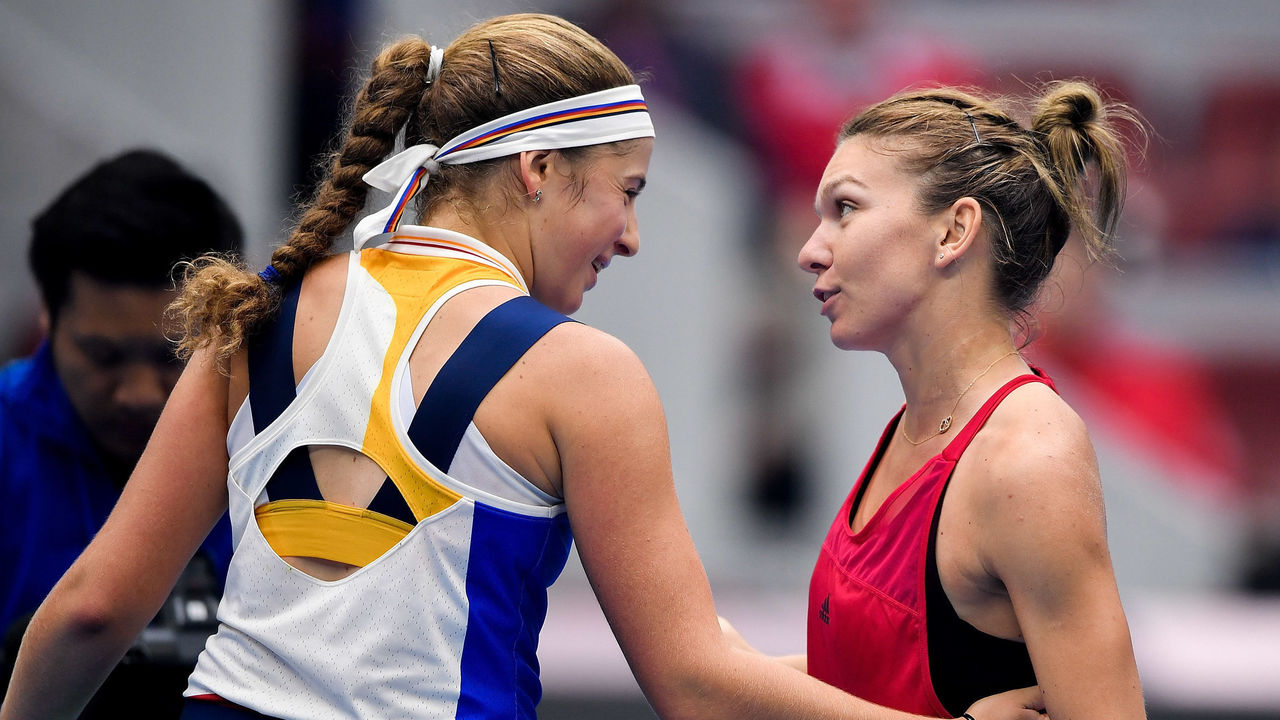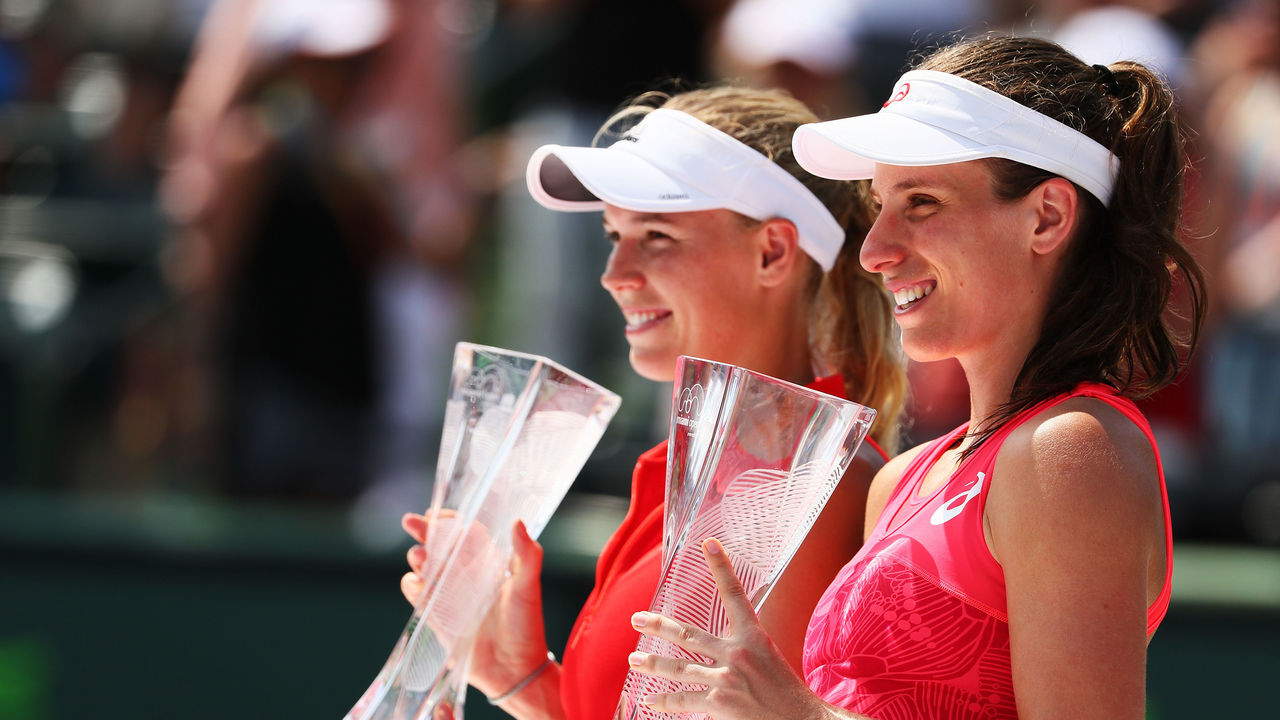What we learned about the WTA in a year without Serena
Since Serena Williams won the Australian Open 12 months ago, breaking a tie with Steffi Graf and claiming her Open-era-record 23rd major title, the WTA has existed in a sort of in-between state - what the great Mary Carillo aptly dubbed a "pregnant pause" - as its greatest champion stepped away from the game to have a child.
Serena, back to competing on court, won't be defending her Aussie Open title in 2018 as she'd initially planned. But while that certainly qualifies as a disappointment given the anticipation, a year of Serena-less women's tennis has taught us better than to think it portends a drop-off in watchability or quality of competition.
To be clear: the WTA is better when Serena is part of it, not just as a titanic competitor but as an ambassador for the game and a wide-reaching cultural touchstone. It is impossible to overstate the impact she has had on the sport of tennis (and sport in general) during her boundary-shattering career. But there was also this perception that Serena had been carrying the tour in recent years, and there was consequent concern over what would become of it when she finally decided to move on.

Last year gave us a glimpse of that once-feared-for future, and it wound up having almost the inverse effect of what many expected, with Serena's absence helping to highlight the rest of the WTA in one of the most memorable women's tennis seasons in recent history. That's not to say Serena was directly responsible for blocking her peers' shine. But she carries with her a sense of inevitability that changes the tenor of competition, and her presence cannot help but draw a large portion of a tournament's oxygen. Serena casts a long shadow; her hiatus has given her cohorts a chance to step out of it and shine on their own.
Racquet magazine founder Caitlin Thompson made a salient and relevant argument on Carl Bialik's "Thirty Love" podcast last month: For as much practical business sense as it makes, and as much as it draws in the casual fan, the star-driven landscape of modern tennis can detract from the simple pleasures of the sport itself. "At the end of the day, to me, the sport of tennis is about the sport of tennis," Thompson said. "It's not about the stars."

The WTA certainly saw no shortage of quality and drama. Absent a tried-and-true front-runner, every significant tournament seemed to offer up 10 or more legitimate contenders - a healthy mix of youngsters and veterans, stalwarts and upstarts - while delivering multiple epic, ferociously contested matches along the way. And, for those who crave electricity, there was still more than enough star power to light up the tour.
Among other things, the season spotlighted the mental and physical fortitude of Petra Kvitova, who came back from a horrific knife attack to win a grass-court title and make a deep run in Flushing Meadows; the steely resolve of Garbine Muguruza, who left the French Open in tears and came back to win Wimbledon as part of a career-best run; the unflinching, ball-obliterating aggression of Jelena Ostapenko, whose self-belief propelled her to a stunning French Open title just two days after her 20th birthday; the get-up-off-the-mat grit of Simona Halep, who fought through countless bitter disappointments to finally claim the elusive No. 1 ranking; the understated tactical brilliance of Elina Svitolina, who led the tour in titles without packing a knockout punch; the thousand-watt ebullience of Sloane Stephens, who returned from an 11-month layoff after foot surgery to hijack the late-summer season and claim an unfathomable winner's check in New York; the resurgent ruggedness of Caroline Wozniacki, who made final after final before finally winning the last tournament of the year; and the eternal grace and joy and competitive fire of Serena's sister Venus, who led the tour in Grand Slam match wins in her age-37 season.

That's to say nothing of the depth of talent that extended to the outer reaches of the top 50, the top-down competitiveness such that nearly every early-round match merited attention and hardly any victory or defeat qualified as an upset or a letdown. The year's 14 biggest events (the four Slams, four Premier Mandatories, five Premier 5s, and the Tour Finals) were won by 10 different women. Every Slam offered six or seven women the opportunity to become world No. 1. Each major event seemed to bring an injection of newness, a paradigmatic shift of some kind. Does it matter that the results were often unpredictable and chaotic? Because match after match, week after week, someone stepped up to bear the standard.
Johanna Konta, one of the breakout stars of the first half of the 2017 season, was asked this week whether she feels things are wide open, and that virtually anyone can win, with Serena out of the picture.
"Whenever I get asked that question, it always comes across in really kind of a negative way instead of acknowledging how many great players we have," Konta said. "The depth in women's tennis I really do believe in the last few years has gotten so strong. You see it in every round, in tournaments, in Slams. There's so many massive first rounds, tough second rounds. There's no straight sailing to the quarters or semis anymore. It doesn't exist.

"That's not specific to a Grand Slam. That's the same in Brisbane. I played Madison Keys first round. Even Sydney I played Agnieszka (Radwanska). It's exciting for the fans that bought tickets. They know when they're coming, whatever day they bought tickets, there's going to be great matches on. I think that's exciting. That's what they pay their money for: to see an entertaining game of tennis. I think we are providing this entertainment."
In a way, the consistent quality on display has been affirming for Serena herself, because in recent years, the extent of her dominance made it difficult to gauge whether she was running up the score on a diluted field, or whether she's been good enough to make a strong field look overmatched. The 2017 season made a compelling case for the latter. In spotlighting the rest of the women's tour, Serena's absence made her own accomplishments against those players feel all the more impressive.
If, for whatever reason, you weren't already sold on Serena's greatness, a year with her on the sidelines - oddly enough - ought to have been enough to make you fully appreciate it.
(Photos courtesy: Getty Images)
HEADLINES
- Kerr: Timeout blowup with Draymond 'not my finest hour'
- Harbaugh: Relationship with Lamar 'A-plus' amid reported tension
- Kittle uncertain to play vs. Bears after missing Wednesday's practice
- Watt returns to practice 2 weeks after lung surgery
- Former NBA 2nd-round pick Nnaji joins Baylor with immediate eligibility